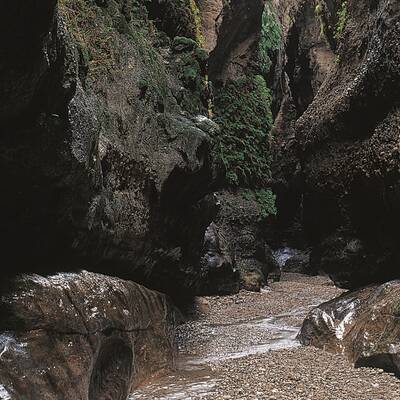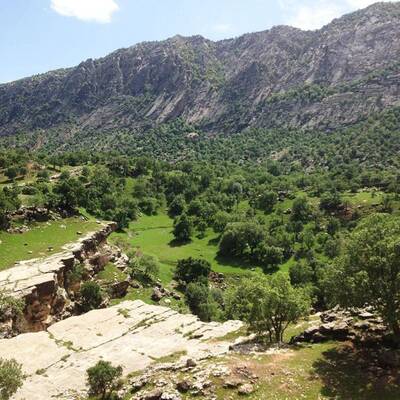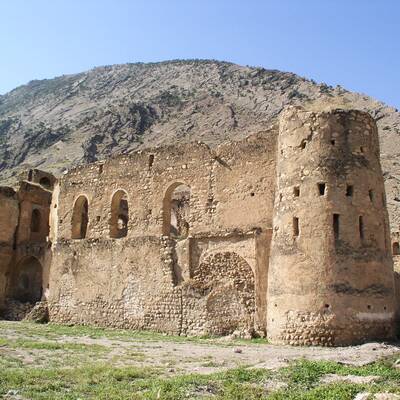Arghavan valley is one of the most beautiful and unique geological phenomena close to the city of Ilam. It is located along the path to a gorge named Ghuchali, and covers a land as big as one hundred and seventy hectares. The reason for the naming of this natural formation as Arghavan, literally meaning Judas tree, is the existence of many trees of this plant along the riverside.
In the past, Arghavan valley was known as Gavaz. Today, known as Arghavan, it is a tourism destination for local people of Ilam, as well as foreigner tourists.
This valley is a very suitable location for growing kinds of plants and trees that are resistant to cold weather such as Oak, Hawthorn and Keikom, a kind of maple. It is due to this vegetation that beekeeping is prosperous and high-quality honey is produced in this area.
The height of the shrubs that grow in Arghavan valley can reach twelve meters. During Farvardin and Ordibehest (about March, April and May), the gorge completely turns rich purple and creates a visionary scene in front of the visitors. Even though Ilam County is considered the original birthplace of Judas tree, other plants such as oak are found in forms of dense forests.
There are rivers and some water springs located in Arghavan valley. The visitors can also benefit from the water springs during their trip and spend a few hours of their time in this natural environment.
Shrubs of Judas tree usually grow next to rivers in floodplains, where the soil is light. These plants are usually propagated by the seeds covered in pods and produce flowers after one year. The flowers grow in groups of three to six on branches or even the main body of the plant. When the temperature reaches more than fifteen degrees during day time, they begin to bloom and last about two weeks. The blossoms of the Judas tree are edible. They have a sweet and sour taste and can be used as a decoration along with other vegetables. Unfortunately, this plant now faces the danger of extinction.

.jpg)
تنگ ارغوان.jpg)


.jpg)


شهر تاريخي دره شهر.jpg)
